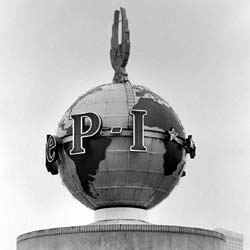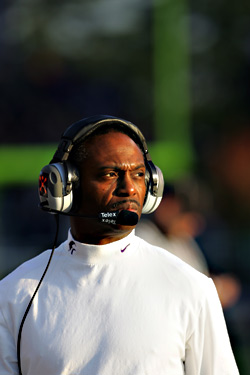RECENTLY, SEATTLE TIMES publisher Frank Blethen has turned into the Mouth of South Lake Union, proclaiming that the city will soon belong to one daily newspaper and that the Times will be that paper. Blethen could do that by scuttling the joint operating agreement (JOA) under which the Times and competing Seattle Post-Intelligencer are published.
The Hearst Corp., owner of the P-I, has responded to Blethen’s noise with a monklike silence. That’s left many people in town to wonder if Hearst is serious about taking on the Times or whether, owing to a provision of the JOA, it might agree to close the P-I and walk away with one-third of the Times‘ profits until 2083.
“It’s time for the staff to speak,” says P-I columnist Joel Connelly. Along with others at the paper, he believes that P-I staffers should step into the void created by corporate omerta, if only to convince the public that the paper is a valuable part of the community and isn’t going anywhere soon.
Like others who work under the sign of the globe, he’s convinced that Hearst’s silence is a battle tactic, not a sign of submission.
“No one particularly likes it, but we know deep down that they know what they are doing,” says John Levesque, a P-I sports columnist.
“I don’t think people are bitter toward top management at all,” says Neil Modie, a P-I reporter. “There’s some frustration and the wish they would have some response so all of Frank’s words don’t hang out there unanswered.”
Blethen says that the Times finds it difficult to retain P-I subscribers (see “Pulp Friction,” Feb. 5), and Hearst has yet to respond to that assertion. Under the JOA, the Times handles circulation for the two papers, as well as printing, distribution, advertising, and other business functions.
Connelly and others are concerned that much of what the paper has done over its history is being ignored as Blethen seizes the agenda. That’s especially important as the P-I‘s former lock on breaking news has been pried open, to a degree, by the Times since the Times‘ switch to morning publication in 1999. As a result, it is not uncommon for the papers to closely resemble one another in the scope of their news coverage.
ALL THE SAME, Connelly, a 30-year veteran, points out that the P-I has been ahead of the Times on many crucial stories. Connelly cites P-I coverage of the Washington Public Power Service System and asbestos mining in Libby, Mont. Others note that the P-I was the first to report that the master of ballot initiatives, Tim Eyman, took money from his own organization. And last week, the P-I was first to report that UW football coach Rick Neuheisel had lied about not interviewing for a job with the San Francisco 49ers. (Ironically, the week before, outgoing Times managing editor Alex MacLeod said the Times “owned” the Seattle sports beat.)
David Horsey, the P-I‘s Pulitzer Prize- winning editorial cartoonist, says that the paper is going to take further steps to differentiate itself from the Times. Although he wouldn’t answer specific questions as to changes in content or coverage, he says the P-I won’t be going to a tabloid format, as has been frequently rumored. Look for the changes later this year.
What remains perplexing, however, is that to date there has been no active hew and cry from the public about potentially losing the P-I. Levesque, for one, isn’t worried by that.
“You will hear that, but we’re going to have to come closer to the edge before we do,” he says.








